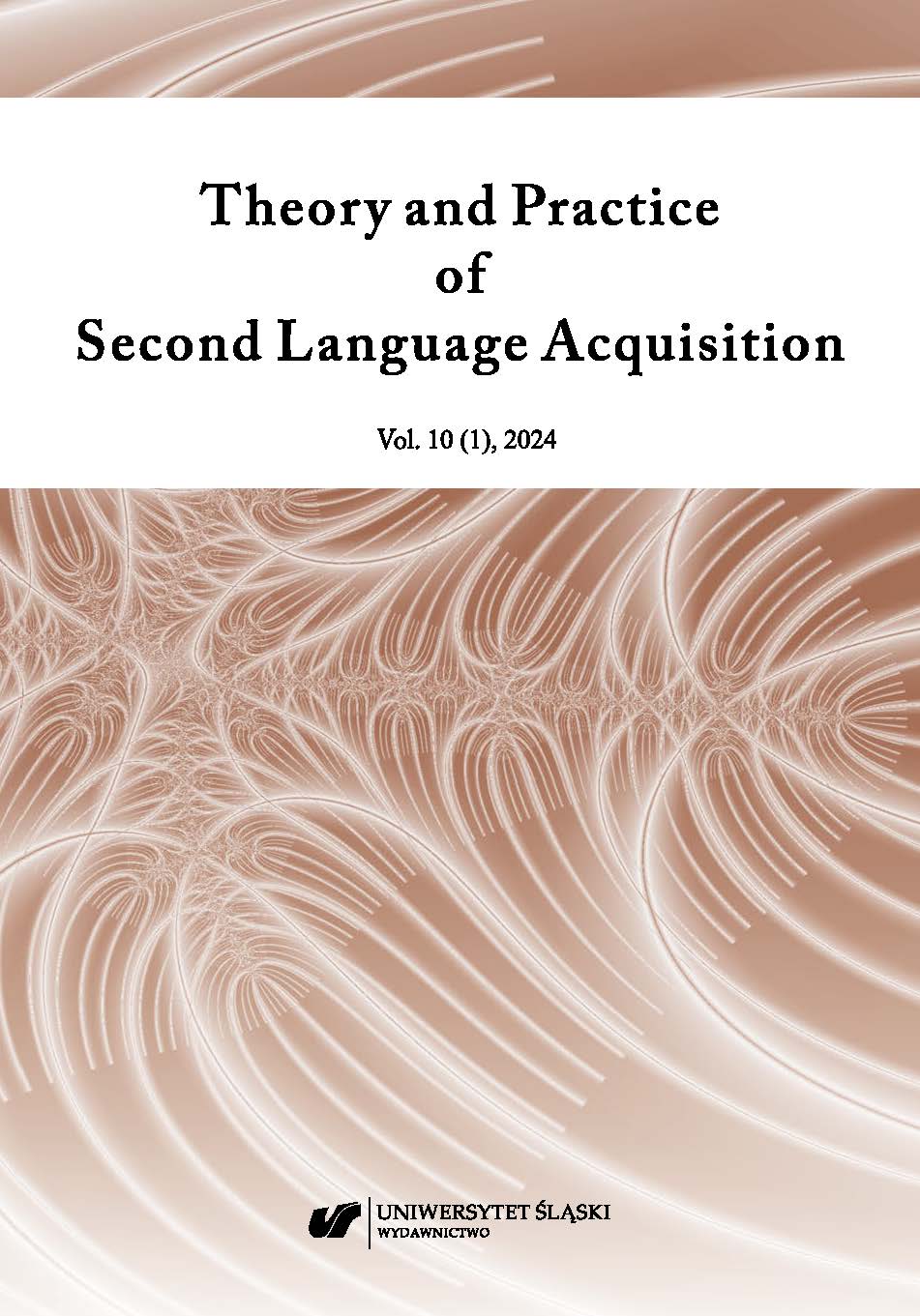Anderson, R. C., Ku, Y.‑M., Li, W., Chen, X., Wu, X., & Shu, H. (2013). Learning to see the patterns in Chinese characters. Scientific Studies of Reading, 17(1), 41–56. https://doi.org/10.1080/10888438.2012.689789
Google Scholar
Chuang, H.‑Y., & Ku, H.‑Y. (2011). The effect of computer‐based multimedia instruction with Chinese character recognition. Educational Media International, 48(1), 27–41. https://doi.org/10.1080/09523987.2011.549676
Google Scholar
Cook, V., & Bassetti, B. (2005). Chapter 1: An introduction to researching second language writing systems. In V. Cook & B. Bassetti (Eds.), Second language writing systems (pp. 1–68). Multilingual Matters. https://doi.org/10.21832/9781853597954-003
Google Scholar
Everson, M. E. (1998). Word recognition among learners of Chinese as a foreign language: Investigating the relationship between naming and knowing. The Modern Language Journal, 82(2), 194–204. https://doi.org/10.2307/329208
Google Scholar
Jurgiel-Aleksander, A. (2016). Fenomenografia i jej poznawcze konsekwencje w świetle projektu na temat doświadczeń edukacyjnych dorosłych. Refleksja badacza. Rocznik Andragogiczny, 23, 267–282. https://doi.org/10.12775/RA.2016.014
Google Scholar
Kuo, L., & Anderson, R. C. (2008). Conceptual and methodological issues in comparing metalinguistic awareness across languages. In K. Koda & A. M. Zehler (Eds.), Learning to read across languages (pp. 51–79). Routledge. https://doi.org/10.4324/9780203935668-10
Google Scholar
Lam, H. C. (2006). Orthographic awareness in learning Chinese characters. The University of Hong Kong. [PhD dissertation]. http://sunzi.lib.hku.hk/hkuto/record/B3762734X
Google Scholar
Lam, H. C. (2010). Orthographic awareness. In F. Marton, S. K. Tse, & W. M. Cheung (Eds.), On the learning of Chinese (pp. 53–73). Sense Publishers.
Google Scholar
Loh, E. K. Y., Liao, X., & Leung, S. O. (2018). Acquisition of orthographic knowledge: Developmental difference among learners with Chinese as a second language (CSL). System, 74, 206–216. https://doi.org/10.1016/j.system.2018.03.018
Google Scholar
McBride, C. (2018). Foreword. In H. K. Pae (Ed.), Bilingual processing and acquisition: Vol. 7. Writing systems, reading processes, and cross-linguistic influences: Reflections from the Chinese, Japanese and Korean languages (Vol. 7, pp. ix–xii). John Benjamins Publishing Company. https://doi.org/10.1075/bpa.7.fore
Google Scholar
McBride, C. A. (2016). Is Chinese special? Four aspects of Chinese literacy acquisition that might distinguish learning Chinese from learning alphabetic orthographies. Educational Psychology Review, 28(3), 523–549. https://doi.org/10.1007/s10648-015-9318-2
Google Scholar
Moroz, J. (2013). Fenomenografia jako metoda badania treści świadomościowych. Pedagogika Szkoły Wyższej, 1, 33–44. https://doi.org/10.18276/psw
Google Scholar
Orgill, M. (2012). Variation theory. In N. Seel, Encyclopedia of the sciences of learning (pp. 2608–2611). Springer.
Google Scholar
Ornek, F. (2008). An overview of a theoretical framework of phenomenography in qualitative education: An example from physics education research. Asia-Pacific Form on Science Learning Teaching, 9(2), 1–14.
Google Scholar
Shen, H. H. (2004). Level of cognitive processing: Effects on character learning among non-native learners of Chinese as a foreign language. Language and Education, 18(2), 167–182. https://doi.org/10.1080/09500780408666873
Google Scholar
Shen, H. H. (2005). An investigation of Chinese-character learning strategies among non-native speakers of Chinese. System, 33(1), 49–68. https://doi.org/10.1016/j.system.2004.11.001
Google Scholar
Shen, H. H., & Ke, C. (2007). Radical awareness and word acquisition among nonnative learners of Chinese. The Modern Language Journal, 91(1), 97–111. https://doi.org/10.1111/j.1540-4781.2007.00511.x
Google Scholar
Tong, X., & Yip, J. H. Y. (2015). Cracking the Chinese character: Radical sensitivity in learners of Chinese as a foreign language and its relationship to Chinese word reading. Reading and Writing, 28(2), 159–181. https://doi.org/10.1007/s11145-014-9519-y
Google Scholar
Toyoda, E. (1998). Issues in the teaching and learning of Japanese. Australian Review of Applied Linguistics. Series S, 15, 155–168. https://doi.org/10.1075/aralss.15.10toy
Google Scholar
Tse, S. K., Marton, F., Ki, W. W., & Loh, E. K. Y. (2010). Learning characters. In F. Marton, S. K. Tse, & W. M. Cheung (Eds.), On the learning of Chinese (pp. 75–102). Sense Publishers.
Google Scholar
Wang, M., Liu, Y., & Perfetti, C. A. (2004). The implicit and explicit learning of orthographic structure and function of a new writing System. Scientific Studies of Reading, 8(4), 357–379. https://doi.org/10.1207/s1532799xssr0804_3
Google Scholar
Williams, C. (2013). Emerging development of semantic and phonological routes to character decoding in Chinese as a foreign language learners. Reading and Writing, 26(2), 293–315. https://doi.org/10.1007/s11145-012-9368-5
Google Scholar
Xu, X., & Padilla, A. M. (2013). Using meaningful interpretation and chunking to enhance memory: The case of Chinese character learning. Foreign Language Annals, 46(3), 402–422.
Google Scholar


 https://doi.org/10.31261/TAPSLA.14693
https://doi.org/10.31261/TAPSLA.14693

 10.31261/tapsla
10.31261/tapsla